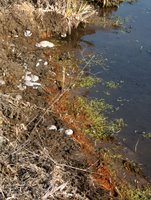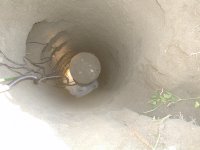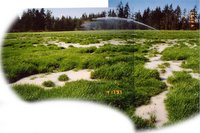La Paz Loses Yakima Case
Little La Paz County, AZ, has failed at great cost in putting biosolids drier Yakima Company out of business. Jim Willett, owner, told me years ago about the bizarre goings on that precipitated his 2004 claim for damages of $20M, the amount he would lose over a 25 year period as a result of the County terminating its contract. The contract was for providing space for the drying operation, and to secure additional space for future expansion in exchange for a $/ton fee. The contract encouraged volume and, in hopes of generating County revenues as quickly as possible, the County allowed Jim to start operations on condition of working up a closure plan and bonding for the closure costs. Then something went sour, and the county stalled beyond reason their acceptance of first the plan and then the bonding. When they did accept, they didn't inform Jim.
It was a pretty simple business model: truck the solids in from LA, lay it out thin and dry it in the wind and sun, windrow it to finesse stabilization, pick it up and truck the now Class A fertilizer-esque material a few miles back to California to needy farmers. With the right combo of clients, farmers, and truckers, it was clean, simple, satisfying, and profitable in what can be a complex, and low margin business.
Last week a La Paz County jury awarded Jim $9.2M plus legal expenses. Jim regrets the process and takes no joy in the results. It is not the life, and not the legacy, that he wanted.
The local rag has posted several articles on the trial (1, 2, 3). The newspaper, which gamely supports comments on articles, was unprepared for the outpouring of vigorous support for the jurors courageous decision, and the level of outrage directed towards the County Board of Supervisors for their mismanagement of political power. The paper clearly slants its writing in support of the BoS, adding to the intensity of the backlash. The editor, John Gutekunst, selectively deletes comments but even at that the longest set of comments now prints out to 33 pages even when ported to Word in 10font.
According to comments, the County's $1.5 million in legal fees are not covered by insurance, and the County determined this early on in the process. Comments characterize the legal effort as a personal vendetta against Jim by Supervisor Gene Fisher. This vendetta included asking the sheriff to arrest Jim's clients at the drier site for trespassing on County property, and coaching employees against their better judgment to the point that one County employee quit their job. Word gets out fast on that type of work place abuse. Tossing aside the potential of $1-200K/yr in much needed tax free revenue for personal reasons has added to local dissatisfaction.
Despite a lack of public support, or financial capacity, it is clear that the County will appeal. A reinvigorated recall effort is mounting to pull the plug on this monster.












